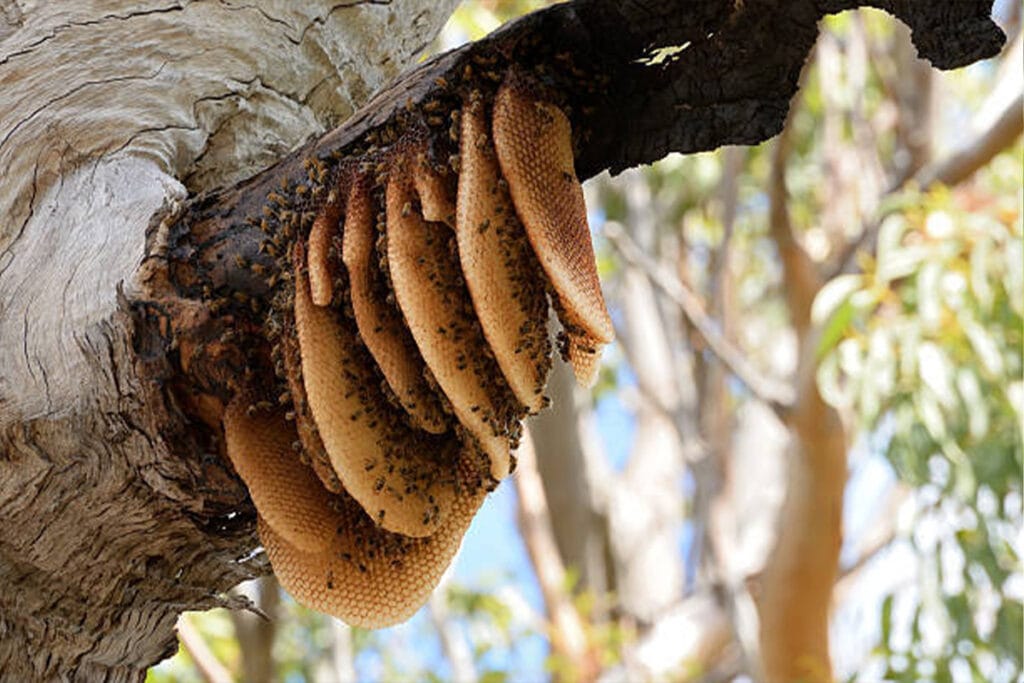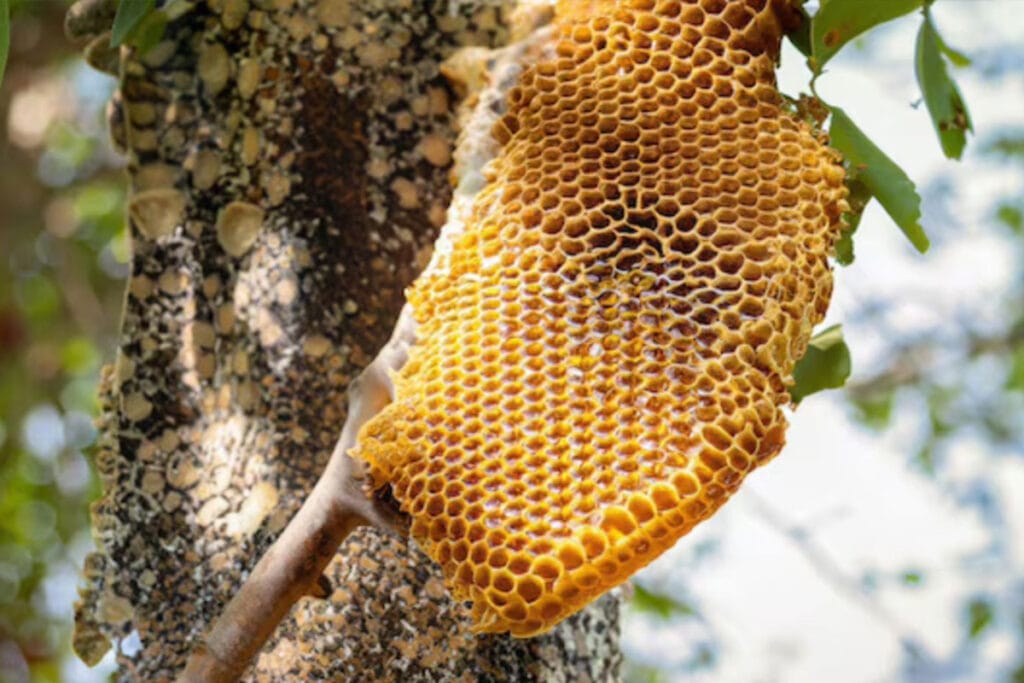
Understanding the Age of a Beehive
Have you ever looked at a beehive and wondered about its age? For professional bee removers and beekeepers, the age of a beehive isn’t just a point of curiosity—it’s essential information that can influence approach and strategies. Even if you are not a beekeeper but are very enthusiastic about bees, this blog will help you understand and easily tell how old a beehive is. There are two key indicators that can provide valuable insights into a hive’s age: its size and the color of its comb. Understanding these physical traits can reveal a lot about a hive’s history and vitality. Here’s a guide to help you decode these signs and gain a deeper appreciation of the beehives you encounter.

1. Hive Size: A Growing Story
The size of a beehive can tell you a lot about its age and development. Generally, the size of a hive can be categorized into three stages:
a. New Hive
In the initial stages of a hive’s life, it’s relatively small and compact. New hives, typically established from a nucleus (nuc) or a swarm, will have a limited number of frames and a smaller brood area. At this stage, the hive is still building up its colony size and is often less than a year old.
b. Developing Hive
As the hive grows, so does its size. Over the first year, a healthy hive will expand as bees build new comb, increase their brood, and store more honey and pollen. During this period, the hive will usually be more active, and you’ll notice a gradual increase in the number of frames filled with comb. By the end of the first year, a well-managed hive will have a significant number of frames filled with comb and a well-established brood pattern.
c. Established Hive
After a hive has been active for over a year, it reaches its full size. Established hives have multiple deep brood boxes and are often expanded with additional honey supers to accommodate the growing colony. These hives are well-developed, with extensive comb coverage and a stable brood pattern. They are typically more resilient and productive, assuming they have been properly managed.

2. Comb Color: A Clue to Age and Health
Comb color can offer insights into the age of the comb and, indirectly, the hive’s history. Here’s how different colors can help you gauge the age of the comb:
a. Fresh Comb
Newly built comb is usually white or light in color. This is because bees use wax directly from their glands, which starts off quite clean and bright. Fresh comb typically has a smooth, pristine appearance and is often found in newer hives or in frames that have been recently added to the hive.
b. Mature Comb
As comb ages, it undergoes several changes. Over time, the wax darkens due to the accumulation of propolis, pollen, and honey residues. Older comb can range from light brown to dark brown or even black. This darkening process is natural and indicates that the comb has been in use for a while. In an established hive, you’ll find a mix of both newer and older combs.
c. Old Comb
Very old comb can become almost black and may show signs of wear and tear. It may also be more brittle and less pliable. In older hives, you’ll often find several frames with dark, aged comb, especially in the brood boxes where bees have been raising young for many seasons.

3. Combining Size and Comb Color
By examining both the size of the hive and the color of the comb, you can get a clearer picture of its age and condition. For example:
A small hive with bright, clean comb likely indicates a relatively new or recently established colony.
A larger hive with a mix of fresh and dark comb suggests a more mature hive that has been active for at least a year.
A very large hive with predominantly dark comb indicates an established hive with several years of activity.
4. Maintenance Tips
Understanding the age of your hive is crucial for its management. Here are a few tips:
Regular Inspections: Regularly check both the size of the hive and the condition of the comb to monitor its health and productivity.
Comb Replacement: Replace old, dark comb periodically to prevent diseases and ensure optimal brood health. Typically, replacing a comb every 3-4 years is recommended.
Expand as Needed: Be prepared to add more boxes or frames as the hive grows to prevent overcrowding and swarming.
Determining the age of a beehive through its size and comb color can enhance your beekeeping experience and help you maintain a healthy, productive colony. Even if you are not a beekeeper, it is important for you to understand the age of a beehive to understand what you are dealing with. So the next time you come across a beehive, you will be able to tell how old it is.